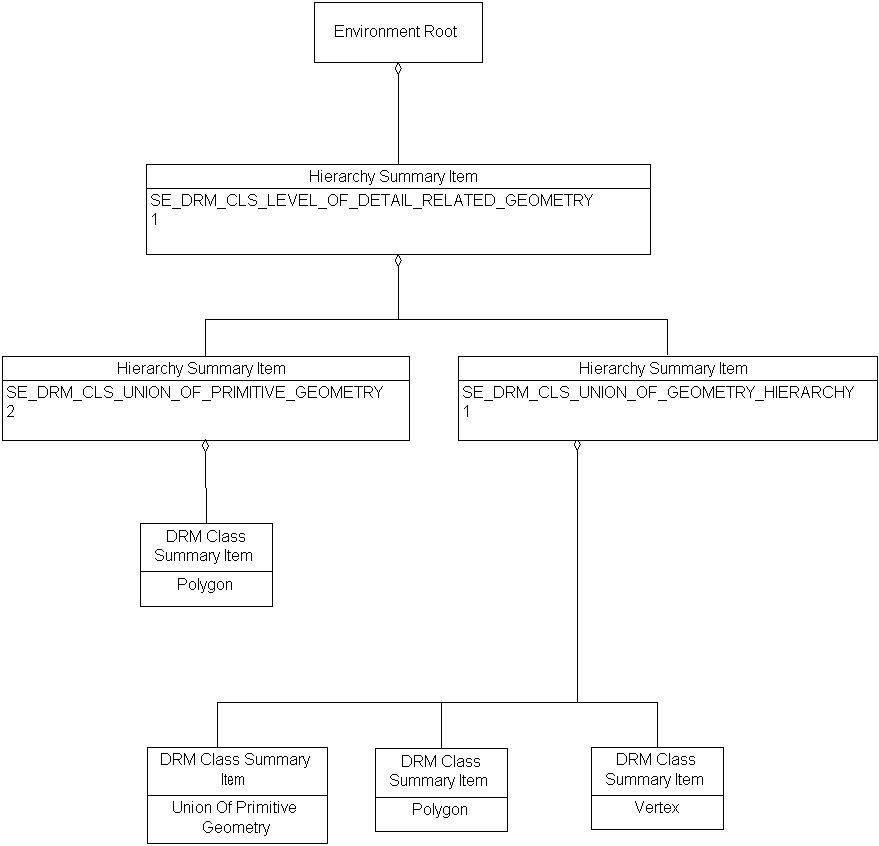A summary of the classes used in an entire transmittal.

A summary of classes used in part of a transmittal. (See the FAQ list also).
The geometry portion of the given <Environment Root> has the following layout.


|
The SEDRIS Data Representation Model
APPENDIX A - Classes DRM Class Summary Item |
|---|
An instance of this DRM class is used as part of a summary of a transmittal's content to represent instances of a class (specified by the drm_class field value) that are used that transmittal.
<DRM Class Summary Items> are combined together to form a list of the classes that are present in a transmittal or part of a transmittal. Each such list has only one entry per class. However, it does not have to be a complete list of every class used, and it can include abstract classes.
Each <DRM Class Summary Item> can optionally have a list of <EDCS Use Summary Items> giving the classifications that are attached to instances of that class in the transmittal. Obviously this only makes sense for those classes that can have classification information.
Each <DRM Class Summary Item> can also have a list of <SRF Summary> instances giving the spatial reference frames defined in the transmittal by instances of that class. Obviously this only makes sense for those classes that contain spatial reference frame parameters.
A summary of the classes used in an entire transmittal.

A summary of classes used in part of a transmittal. (See the FAQ list also).
The geometry portion of the given <Environment Root> has the following layout.


This illustrates the possible use of <DRM Class Summary Item> if we were to use the <Hierarchy Summary Item> to show only the top level hierarchy (for some reason).
The data producer may decide, for a number of reasons, that it would be useful to summarize the hierarchy down to a certain level only, but that it's also useful to show that there are aggregates such as <Union Of Primitive Geometry> below that level - i.e., showing that they exist, rather than showing their position in the hierarchy, is what is of value.
This isn't ambiguous as the two classes (<DRM Class Summary Item> and <Primitive Summary Item> summarize different aspects of a transmittal. Therefore the same classes can (and will) quite legitimately be represented by both. So <Polygon> and <Vertex> can turn up as types of <DRM Class Summary Items>, to summarize their presence in the transmittal, and as <Primitive Summary Items>, to show common patterns of objects in which they are used.
| SE_DRM_Class | drm_class; | (notes) |
|---|
If present, the list of <EDCS Use Summary Item> components of a <Base Summary Item> instance summarize EDCS usage by instances of the class specified by drm_class that occur somewhere in the scope being summarized.
Here the given instance represents a class used in part of the given transmittal.
Here the given instance represents a class used in the entire the given transmittal.
This field indicates the DRM class of the object(s) represented by the given <Base Summary Item> instance.
|